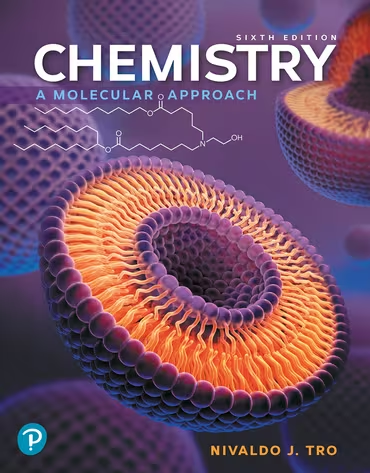Most fertilizers consist of nitrogen-containing compounds such as NH3, CO(NH2)2, NH4NO3, and (NH4)2SO4. Plants use the nitrogen content in these compounds for protein synthesis. Calculate the mass percent composition of nitrogen in CO(NH2)2.

Copper(II) fluoride contains 37.42% F by mass. Calculate the mass of fluorine (in g) in 23.8 g of copper(II) fluoride.
 Verified step by step guidance
Verified step by step guidance
Verified video answer for a similar problem:
Key Concepts
Mass Percent Composition

Calculating Mass from Percent Composition

Unit Conversion

Iron in the earth is in the form of iron ore. Common ores include Fe2O3 (hematite), Fe3O4 (magnetite), and FeCO3 (siderite). Calculate the mass percent composition of iron for each of these iron ores. Which ore has the highest iron content?
Silver chloride, often used in silver plating, contains 75.27% Ag by mass. Calculate the mass of silver chloride required to plate 123 mg of pure silver.
The iodide ion is a dietary mineral essential to good nutrition. In countries where potassium iodide is added to salt, iodine deficiency (or goiter) has been almost completely eliminated. The recommended daily allowance (RDA) for iodine is 150 mg/day. How much potassium iodide (76.45% I) should you consume if you want to meet the RDA?
The American Dental Association recommends that an adult female should consume 3.0 mg of fluoride (F-) per day to prevent tooth decay. If the fluoride is consumed in the form of sodium fluoride (45.24% F), what amount of sodium fluoride contains the recommended amount of fluoride?
Write a ratio showing the relationship between the molar amounts of each element for each compound. (See Appendix IIA for color codes.) (a)
